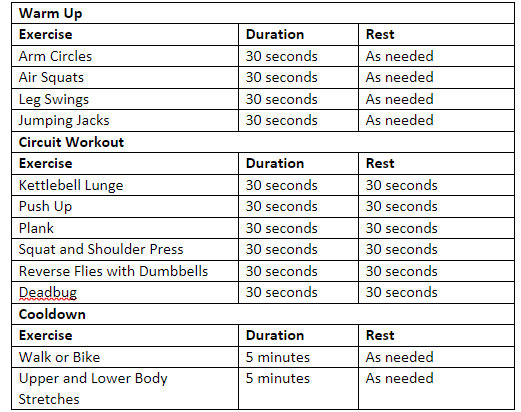What is Circuit Training?
Circuit training is a term used to describe several different workout methods involving a rotation of exercises or exercise stations performed for a certain amount of time. Circuit training programs are designed for each exercise to work for different muscle groups.
The stations are completed in order or circuit. The circuit typically goes through two to four times, depending on the number of exercises it includes. A course with more exercises will be repeated fewer times than a circuit with fewer exercises, and vice versa.
While there is no limit to the number of exercises or stations involved in the workout, the number will typically be capped at around 6 in the interest of timeliness. This way, each muscle group in the workout will get used more than once, which helps promote growth.
Circuit training can be done solo or with a group of people. It is convenient in this sense as people can be spread out at different stations throughout the circuit rather than each person doing the same thing at once. Exercising with others in a circuit can also help provide social motivation if working out alone is difficult to maintain.
Rest Times
Rest periods in circuit training are typically kept shorter to get more exercises done in the allotted timeframe for the workout and provide a cardio benefit because the body is continuously working. However, this doesn’t mean there is no rest for your muscles. Instead, the order of stations is typically arranged for one group of muscles to rest while another is used.
For example, the first station in a circuit might be a lower body exercise such as a squat. The following exercise in that circuit might be a push-up, focusing on the upper body so the lower body can rest before the next exercise.
Common Exercises and Equipment in Circuit Training

Do I Need Weights?
Weights are not required to have a successful circuit workout, which can boost the convenience of doing a circuit training workout at home or on a trip without access to weights or a fitness center. While adding weight to exercises is a great way to make them more difficult, adding more repetitions also works if weights are not available.
There are plenty of good body weight exercises such as pushup and squat variations that provide a good workout for your body without the use of weights or resistance bands.
Benefits of Circuit Training
Circuit training workouts are a great way to fit a full body workout into limited time at the gym, fitting in a shorter timeframe than going through each exercise one at a time.
Another benefit of circuit workouts is that it works different muscle in order, giving each muscle group a break while the next is working. This near-constant activity is great for the heart as well, strengthening cardiovascular endurance.
Importance of Warm Up (and Cooldown)
A proper warmup promotes blood flow to your muscles before the main activity of your workout begins. This helps get nutrients and oxygen to your muscle tissue so that it can perform at its best. Additionally, warming up helps your muscles become slightly more elastic, which can help lower risk of injury.
Cool-down exercises are also important because they allow your body to return to its resting state gradually by lowering activity level in steps rather than stopping all activity at once.
Intensity
Intensity can be what you make it, depending on exercises performed and the rest times between them, if any. Higher activity times and shorter rest times will make the workout more difficult. On the other hand, adding more rest time between exercises or shortening the duration of the exercises will make the workout easier.
If you are unfamiliar with circuit training or higher-intensity workouts, it will be best to keep to a lower intensity for first few workouts while your body gets used to the new activity. Once you have gained some experience and more cardiovascular endurance, your body will be more equipped to handle higher-intensity exercise.
How to Get the Most Benefit from Circuit Training.
To get the most benefit out of a circuit training workout, include exercises that involve different muscle groups in the arms, legs, and core. Sticking to a simple routine at first will allow your body to adjust to a new type of workout plan while progressing towards your goals. Keep in mind the importance of rest. Remember to drink water and take a break if needed because that will help your body perform at its best. See below for an example workout that targets muscle groups in the upper body, lower body, and core.
Example Workout

Warm Up Exercise Duration Rest Arm Circles 30 seconds As needed Air Squats 30 seconds As needed Leg Swings 30 seconds As needed Jumping Jacks 30 seconds As needed Circuit Workout Exercise Duration Rest Kettlebell Lunge 30 seconds 30 seconds Push Up 30 seconds 30 seconds Plank 30 seconds 30 seconds Squat and Shoulder Press 30 seconds 30 seconds Reverse Flies with Dumbbells 30 seconds 30 seconds Deadbug 30 seconds 30 seconds Cooldown Exercise Duration Rest Walk or Bike 5 minutes As needed Upper and Lower Body Stretches 5 minutes As needed



